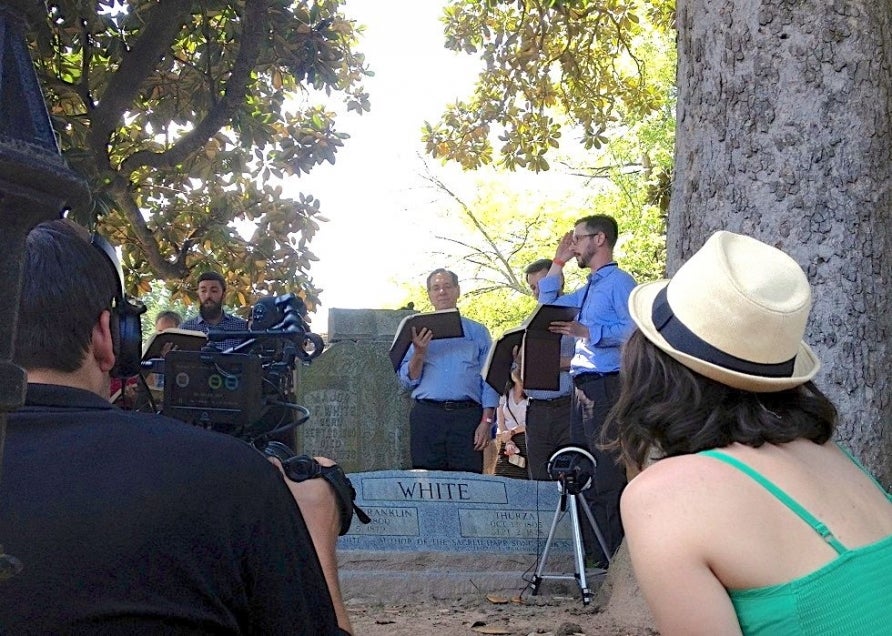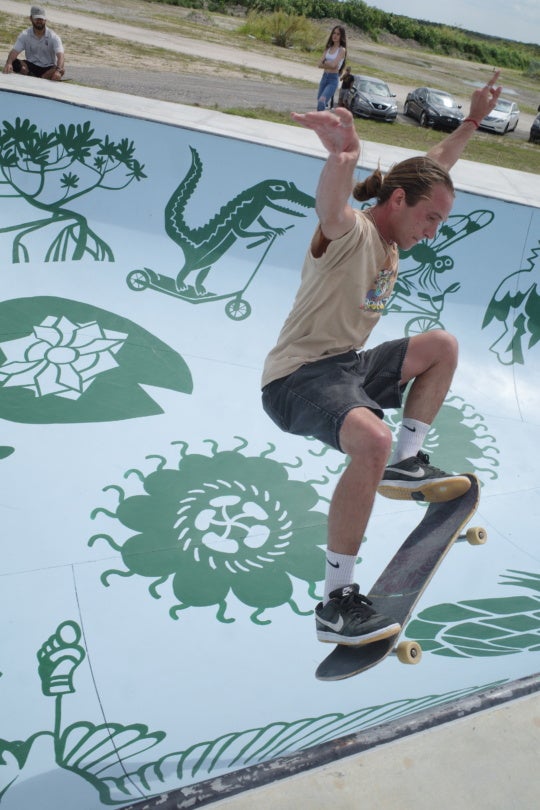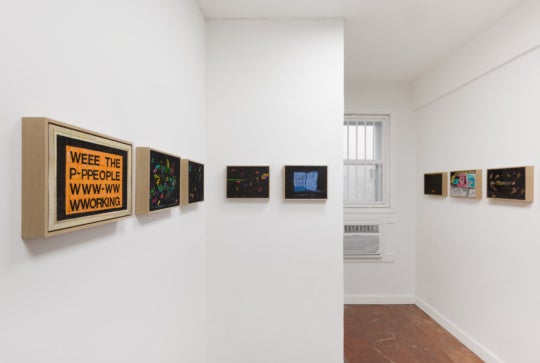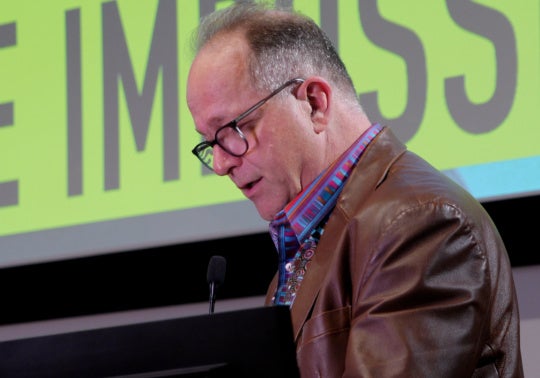
Imagine 11 graveside sound art installations, four musical performances, three graveside chats, one continuous Widow’s Walk performance, and five hours in which to see it all. This was the scene at Atlanta’s historic Oakland Cemetery on Saturday, May 2. A crowd of art lovers, babies and dogs in tow, came to see and hear “The Cyptophonic Tour” in the cemetery’s 48-acre “rural garden.” The event, which received funding from Idea Capital, was an audiophile’s dream orchestrated by the sound art group ROAMtransmissions, a project of Atlanta’s Callosum Collective. ROAMtransmissions curated the content and co-produced it with Arts at Oakland, a new annual arts day series at Oakland Cemetery, long a venue for historical tours and lectures—as well as burials.
A balance was struck between the contemporary sound art installations and the 165-year history of the graveyard. Artists were asked to excavate the musical histories of the cemetery in their works, and short informal lectures held on a grassy lawn contextualized the cemetery’s design and burial practices. The sound installations ranged from a subtle vocal composition hidden in a bed of ivy at Mary Frances Hubner’s grave (Meditation on a Serene Ascent by Madeline Adams) to a roar, as at Chris White and Tera Buerkle’s booming sonic feedback loop at the Lion of Atlanta monument.

For me, the success of such a sprawling, one-day event of splintered sounds—inherently as evanescent as a birdsong—lies in how well it achieves site-specificity through the development of local knowledge and stories as well as in making contemporary connections. Some of the graveside sound installations were more successful than others, but all of them took seriously the life of the grave’s inhabitant, whether it be Judge John Collier, who helped rename Atlanta, or Tweet the Mockingbird, one of the few animals buried in the cemetery. Individual stories came alive again, stepping out of the shadow of the Confederate dead and author Margaret Mitchell, who reside at Oakland.
Roaming among the installations was encouraged, but simply following the timed performances at sites spread out across the park provided plenty of roaming. The large space and many irregular paths created moments of solitude among the mausoleums, blooming flowers, and carefully tended, crumbling headstones. Some of the best moments tied into the historic era of the park, such as the singing of sad songs from the Civil War era (Chris Childs and his group of musicians) and Sacred Harp melodies (Jesse P. Karlsberg and Sacred Harp singers), where I found an old-fashioned joy in communal singing that is no longer common. Oakland Cemetery itself has heard much singing over the years, as Grace Thornton’s continuous Widow’s Walk performance reminded me; the artist glided past dressed in black weeds and singing mourning hymns.

At the same time, the “Cryptophonic Tour” was no nostalgic venture or historical reenactment. Installations such as Meredith Kooi’s sound devices resembling miniature UFOs that littered Potter’s Field, where grass grows over thousands of unmarked graves, uses contemporary technology with a contemporary aesthetic; no steampunk here. Technology and new media buzzed about, not only in the ever-present sound equipment of the installations or people’s iPhones, but in the circling drones. Drones do, in fact, drone loudly, overlaying the sound of everything they hovered above while capturing footage of the event. But one of my favorite experiences combined the contemporary and the historic: Dust-to-Digital and Stephen Fenton performed an audio mix by overlaying wax cylinders, one of the oldest forms of commercial recorded sound, and live shortwave radio surfing in a harmonious, improbable, and densely layered marriage of sounds. It felt as if the sounds were struggling to emerge from the past into the present.

In many instances, that proved an apt metaphor for the highlights of the day: the historic came alive in the present, but in new guise through so many mediating aesthetic decisions and Instagram filters. At Chelsea Dunn’s improvisation on cello, I was first annoyed by the hovering interruption of a drone, but when Thornton in passing added her voice to the mélange I realized that such overlay was perhaps to be embraced as an exuberance of sound rather than curtailed. The day’s medley of sound over the otherwise quiet cemetery or a crowd gathered around a cello player at a grave could be seen as the liveliness of the present garbling a clear view of the past. Projects like this one, done on a shoestring budget and unafraid of experimentation, are what makes Atlanta’s art scene exciting right now.
Linnea West is a writer, art blogger, and Athens native pursuing a master’s in art history at the University of Georgia. She is also a participant in BURNAWAY’s Emerging Art Writers Mentorship Program.





